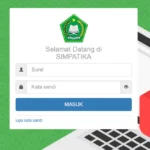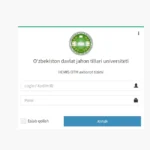Kundalik Comga Kirish is an annual festival in Uzbekistan, celebrating the coming of spring and the renewal of nature. This festival has been celebrated for centuries and is deeply rooted in Uzbeki culture. In this article, we will look in-depth at Kundalik Comga Kirish, its history, significance, associated customs, and traditions.
History of Kundalik Comga Kirish
kundalik comgakirish has its roots in the pre-Islamic period of Uzbekistan. It was believed that the arrival of spring was a time of rebirth and renewal, and the festival was an opportunity to celebrate this renewal. The festival was traditionally held on the first day of spring, which fell on the vernal equinox. Over time, the festival has evolved and is celebrated on the 21st of March each year.
Significance of Kundalik Comga Kirish
Kundalik Comga Kirish is an important festival in Uzbeki culture, representing the renewal of nature and the start of the new year. The festival is an opportunity for people to come together, celebrate, and express gratitude for nature’s bounty. The festival is also seen as an opportunity to wash away the past year’s sins and start anew.
Customs and Traditions of Kundalik Comga Kirish
Kundalik Comga Kirish is a colorful and vibrant festival celebrated with much enthusiasm and zeal. The festival is marked by a range of customs and traditions that are deeply ingrained in Uzbeki culture. Some of the key customs and traditions associated with the festival include:
Decorating Homes and Streets
One of the primary customs associated with kundalik comgakirish is the decoration of homes and streets with flowers and colorful fabrics. People often decorate their homes with fresh flowers, while streets are adorned with colorful banners and flags.
Preparation of Traditional Foods
Kundalik Comga Kirish is a time for feasting, and people prepare traditional Uzbeki dishes to celebrate the festival. Some of the popular dishes include pilaf, shashlik, and some.
Traditional Uzbeki Dance
Dance is an integral part of the festival, with people performing traditional Uzbeki dances like the Beshkerek and Yalla. The dances are performed in groups and are accompanied by traditional Uzbeki music.
Bonfires
Bonfires are another important part of Kundalik Comga Kirish. People gather around bonfires to sing, dance, and ward off evil spirits.
Tug of War
Tug of War is a traditional game played during the festival. Two teams pull on opposite ends of a rope, intending to pull the other team over a designated line.
Exchange of Gifts
Kundalik Comga Kirish is a time for giving, and people exchange gifts with family and friends to celebrate the festival.
Conclusion
Kundalik Comga Kirish is an important festival in Uzbeki culture, representing the renewal of nature and the start of the new year. The festival is marked by a range of customs and traditions deeply ingrained in Uzbeki culture, including decorating homes and streets, preparing traditional foods, traditional dance, bonfires, tug of war, and exchanging gifts. Kundalik Comga Kirish is a colorful and vibrant festival that brings people together and celebrates nature’s bounty.
what is kundalik comga kirish?
https://login.kundalik.com/
Kundalik Comga Kirish refers to the process of creating and maintaining an online presence for your business. This can include building a website, creating social media profiles, and utilizing various digital marketing strategies to reach potential customers.
kundalik comga kirish Login
https://login.kundalik.com/
Visit the kundalik comga kirish login link https://login.kundalik.com/ Then enter sign in,Username, password. Click on the “login” button
Kundalik comga kirish videosi
https://www.youtube.com/watch?v=ZiMsfnQT5M4
login to daily com 5 class | star wars 10 premiere Uzbek … doc wolves video antique race cartoon in Uzbek “Uzbekistan .
Kundalik com ga kirish login parol ochish etish
https://kundalik.com/
Kundalik.com Kirish Login Parol is a secure online access portal to the Kundalik educational organization system.
Kundalik comga kirish tiklash
https://kundalik.com/
To restore access , you can contact the administrator of your educational institution or the employee who gave you the login and password. Now you can enter.



